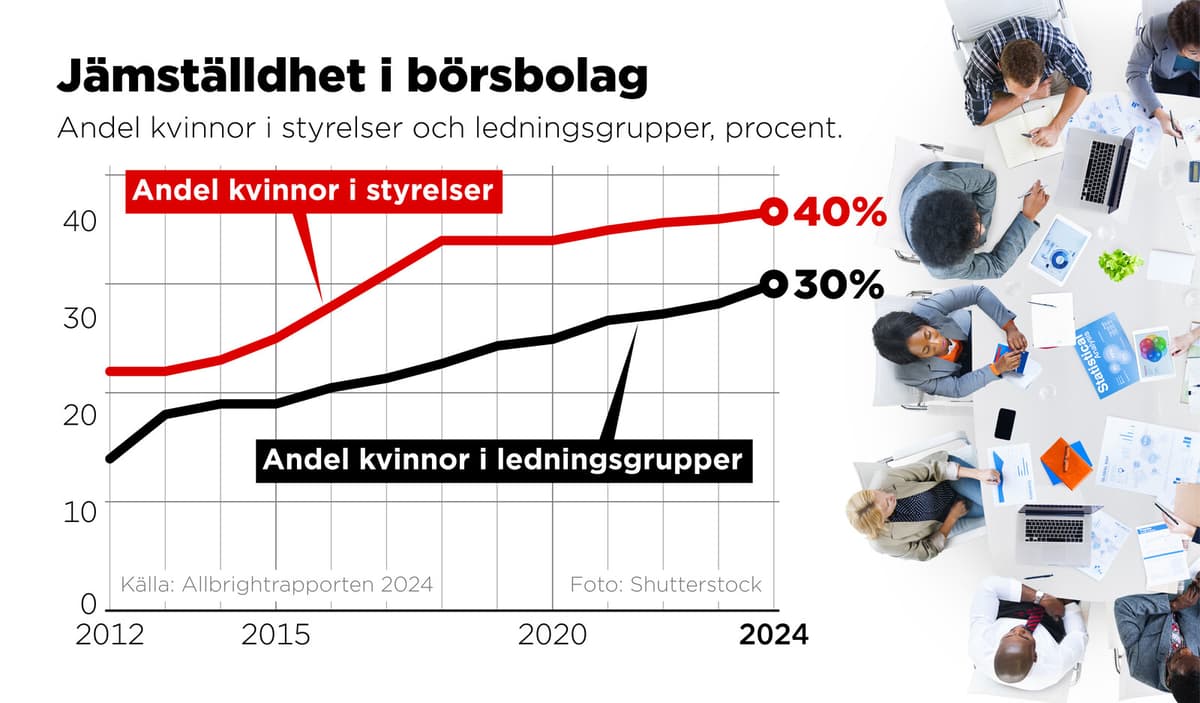The proportion of women on the boards of large companies reaches 40 percent, shows Allbright's latest report. This is the threshold where the representation between the sexes is considered equal.
It's something we've strived for and it's what the debate has been about when talking about representation in business. It shows that we can have equal boards without quotas, says Amanda Lundeteg.
Even when it comes to the representation in management groups, the proportion of women increases, up to 30 percent.
It's two percentage points up from previous years. It doesn't sound like much, but it's a significant difference.
Still in the background
In recent years, progress has been at best "lukewarm", according to Amanda Lundeteg, and questions about equality have fallen a bit by the wayside. She believes that the EU directive on quotas in boards has put some pressure on companies.
Now we're seeing that the issues are on the rise again, including in our dialogue with the companies.
But even though the proportion of women is increasing in, for example, management groups, women still have a hard time getting the very highest positions. Here, no change has occurred, and the proportion of women remains at 17 percent for the fourth year in a row.
Companies are increasing the number of women in the background, in management and on the board. But when it comes to the outermost power positions, such as CEO and chairman, the proportion of women is appallingly low, says Amanda Lundeteg.
"Must hold out"
According to her, development will likely oscillate a bit back and forth. The big challenge ahead will be to get companies to "hold on and hold out".
Companies that are doing poorly need to look at those that have done better – and maybe even look abroad to other countries.
Swedish companies can become more forward-looking, and it will be required to take the next step, says Lundeteg.
The proportion of women in executive positions at private companies:
1. Stockholm: 38 percent
2. Gotland: 34 percent
3. Uppsala: 33 percent
4. Västra Götaland: 32 percent
5. Skåne: 32 percent
17. Örebro: 27 percent
18: Värmland: 27 percent
19. Kalmar: 27 percent
20. Västerbotten: 27 percent
21: Jönköping: 25 percent
Source: The Allbright Foundation





